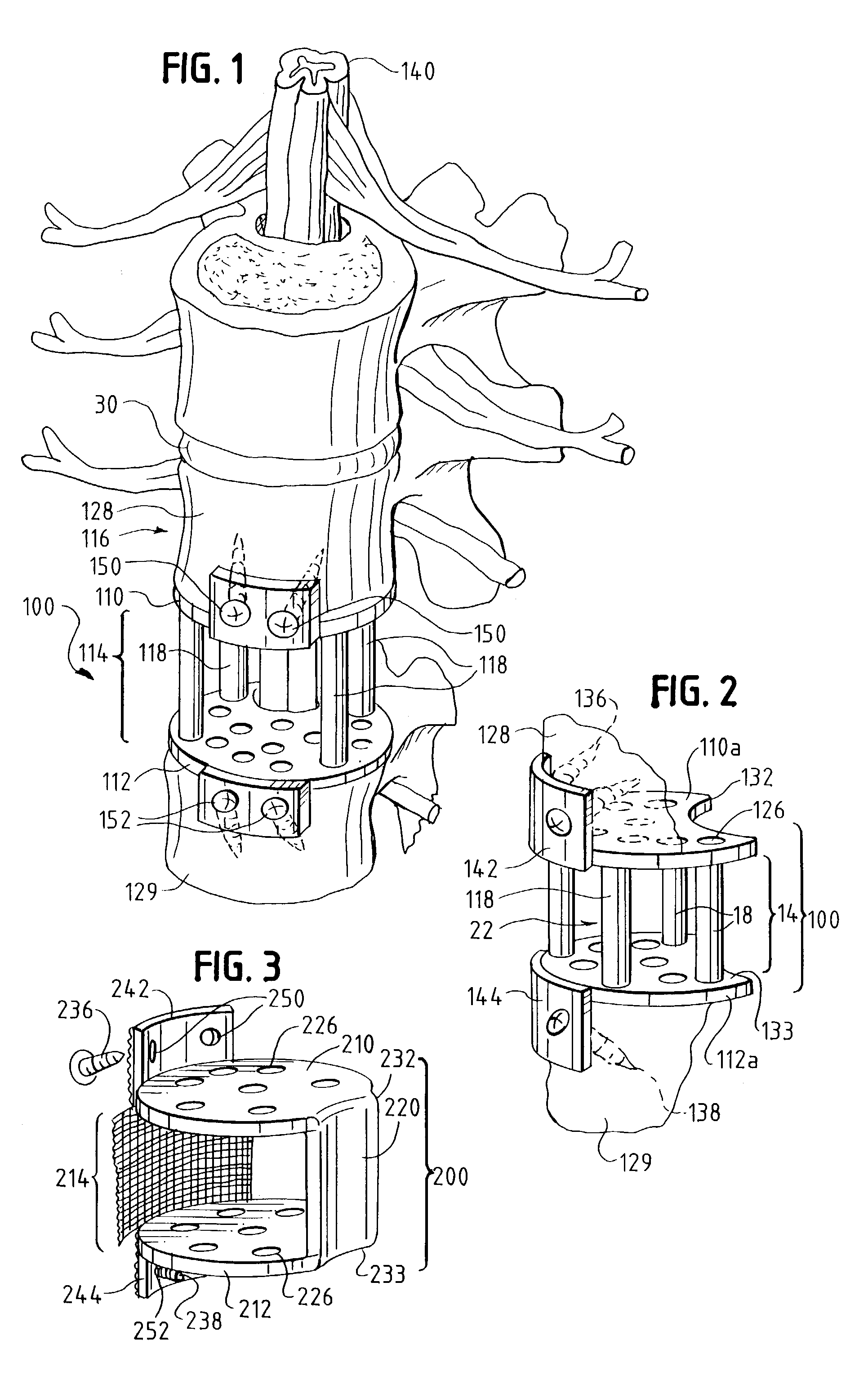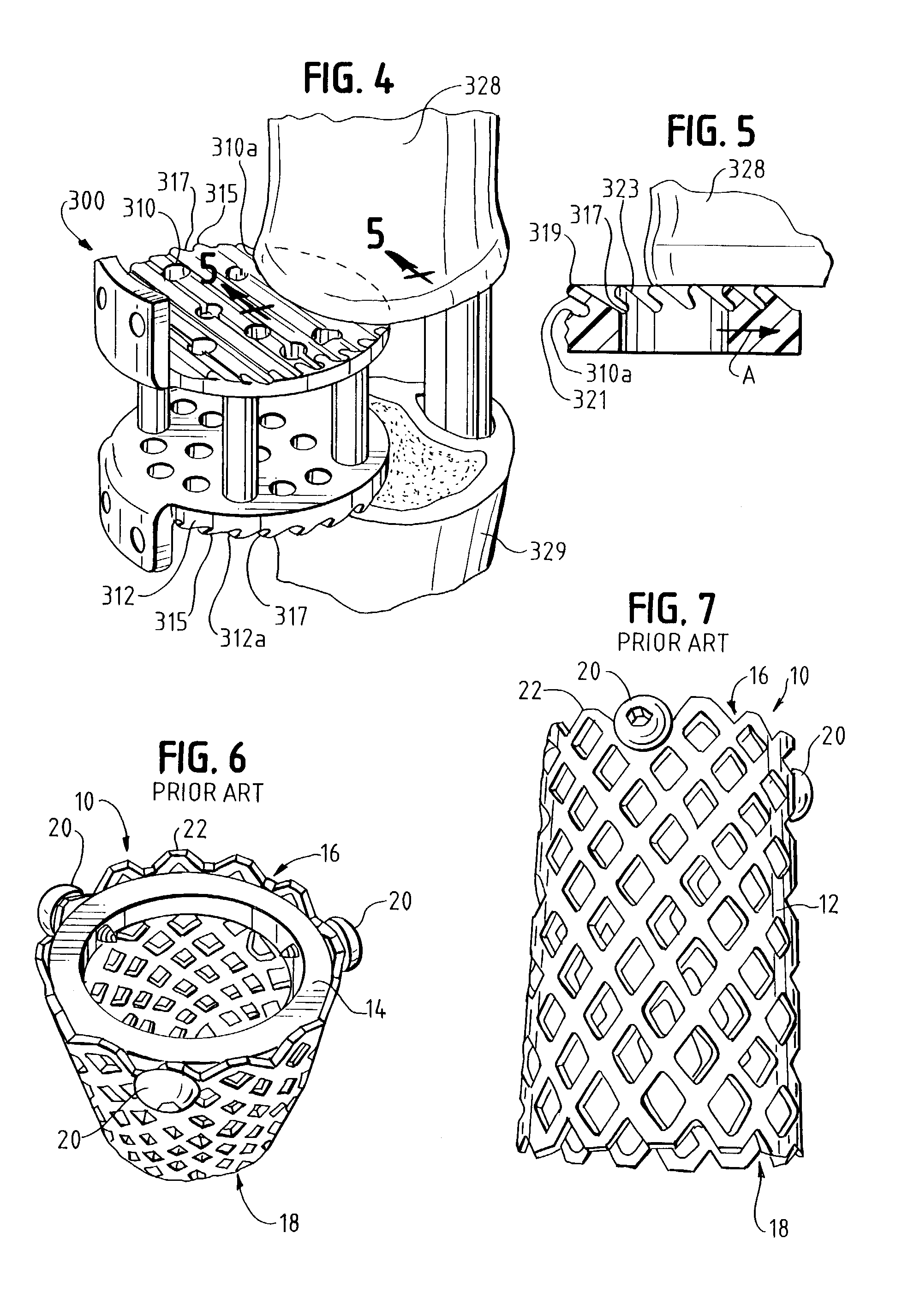Cervical interbody device
a cervical interbody and cervical technology, applied in the field of cervical interbody devices, can solve the problems of difficult to fill the spacer with such bone tissue, difficult to install the spacer between existing vertebrae, and difficult to fill the spacer with additional bone tissu
- Summary
- Abstract
- Description
- Claims
- Application Information
AI Technical Summary
Benefits of technology
Problems solved by technology
Method used
Image
Examples
Embodiment Construction
[0015]As seen in FIGS. 1, 2, the inventive spacer assembly 100 includes an upper end piece 110 and a lower end piece 112 with connector 118 therebetween. The assembly 100 is located between the vertebral bodies of a spine 116 during surgery to maintain the vertebrae in a spaced-apart configuration. End pieces 110, 112 of the present invention are substantially parallel to the adjoining surfaces (often referred to as “end plates”) of the vertebral bodies 128, 129 and are shaped and dimensioned to closely match the cross-sectional shape and dimensions of the end plates.
[0016]Connectors 118 comprise one or more rigid or semi-rigid posts for maintaining a desired distance between the end pieces 110, 112. For example, titanium posts 118, as seen in FIGS. 1 and 2, maintain the spacing between the end pieces so that granular bone material can be inserted between the end pieces in the interior region 114 defined by the assembly 100. The connectors 118 may be of equal length or they may be o...
PUM
 Login to View More
Login to View More Abstract
Description
Claims
Application Information
 Login to View More
Login to View More - R&D
- Intellectual Property
- Life Sciences
- Materials
- Tech Scout
- Unparalleled Data Quality
- Higher Quality Content
- 60% Fewer Hallucinations
Browse by: Latest US Patents, China's latest patents, Technical Efficacy Thesaurus, Application Domain, Technology Topic, Popular Technical Reports.
© 2025 PatSnap. All rights reserved.Legal|Privacy policy|Modern Slavery Act Transparency Statement|Sitemap|About US| Contact US: help@patsnap.com



